Drive three hours from Jakarta for Korean fine-dining? It is a culinary journey worth taking
Sign up now: Get ST's newsletters delivered to your inbox
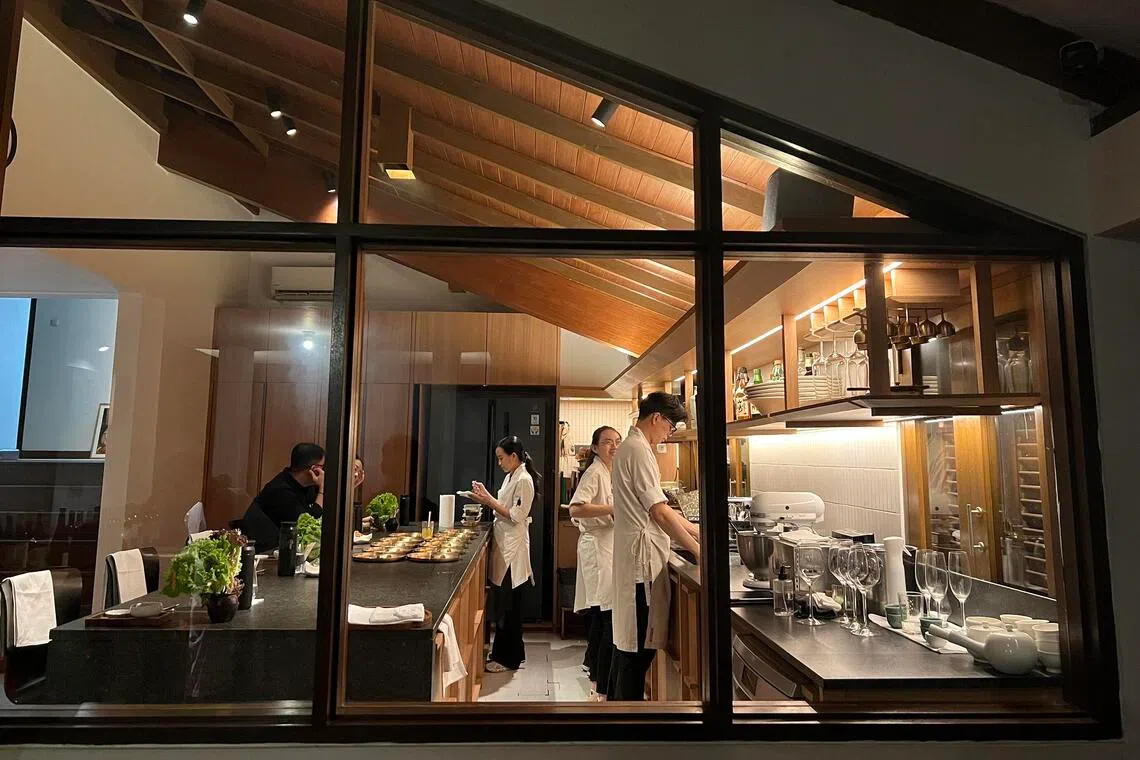
Jung Chan Dining in Bandung is a 12-seater private dining restaurant that regularly draws diners from Jakarta.
ST PHOTO: CLARA LOCK
Follow topic:
- Jung Chan Dining in Bandung offers a unique Korean dining experience, drawing diners from Jakarta and Singapore with its fermentation-focused menu.
- Chef Jung Chanhyuk uses innovative techniques, like fermenting prawns in ssamjang, and incorporates makgeolli and makgeolli salt into his dishes.
- The restaurant features theatrics and culinary storytelling, and is planning to open in Jakarta in 2026.
AI generated
BANDUNG – The restaurant is at least three hours from Jakarta by road, two by high-speed rail when you factor in transfer time.
Yet, the 12-seater private dining session regularly draws diners from the Indonesian capital, including a couple seated next to me during my visit in July, who planned an overnight trip to Bandung around a meal at Jung Chan Dining.
Reservations, released a month in advance on its Instagram page (@jungchan_dining), are usually booked out in two to three minutes.
Singaporeans, too, have snagged spots on the coveted guest list. Around 10 from the country each month, says South Korean chef and founder Jung Chanhyuk, 34, who runs the restaurant with his Indonesian wife, Ms Miyagi Stela Monica, 30. The duo met while at cooking school Le Cordon Bleu Melbourne and have been married for two years.
Fermentation features strongly on the restaurant’s menu and, for that, Bandung is ideal. The climate and water lend themselves to the process – indoor temperatures remain between 23 and 25 deg C year-round.
“Time transforms things slowly,” says Jung.
Under his care, a hunk of prawn meat is blanched, soaked for 10 days in ssamjang, a spicy Korean dipping sauce, and grilled. It is served as part of an appetiser platter and leaves the strongest impression among the six items. The springy crustacean takes on a meaty texture and umami flavour reminiscent of grilled pork.
Similar techniques are applied to the rest of the menu, where makgeolli features strongly. Jung’s version of the Korean rice wine is thick, almost creamy from the volume of rice used, which he says is around 10 times of what goes into convenience-store varieties.
A by-product is makgeolli salt, which is made with fermentation residue and has both the aroma and taste of rice starch. The salt appears throughout dinner in multiple ways – sprinkled atop grilled pork and beef or coating the rim of a soju-mint-lime cocktail.
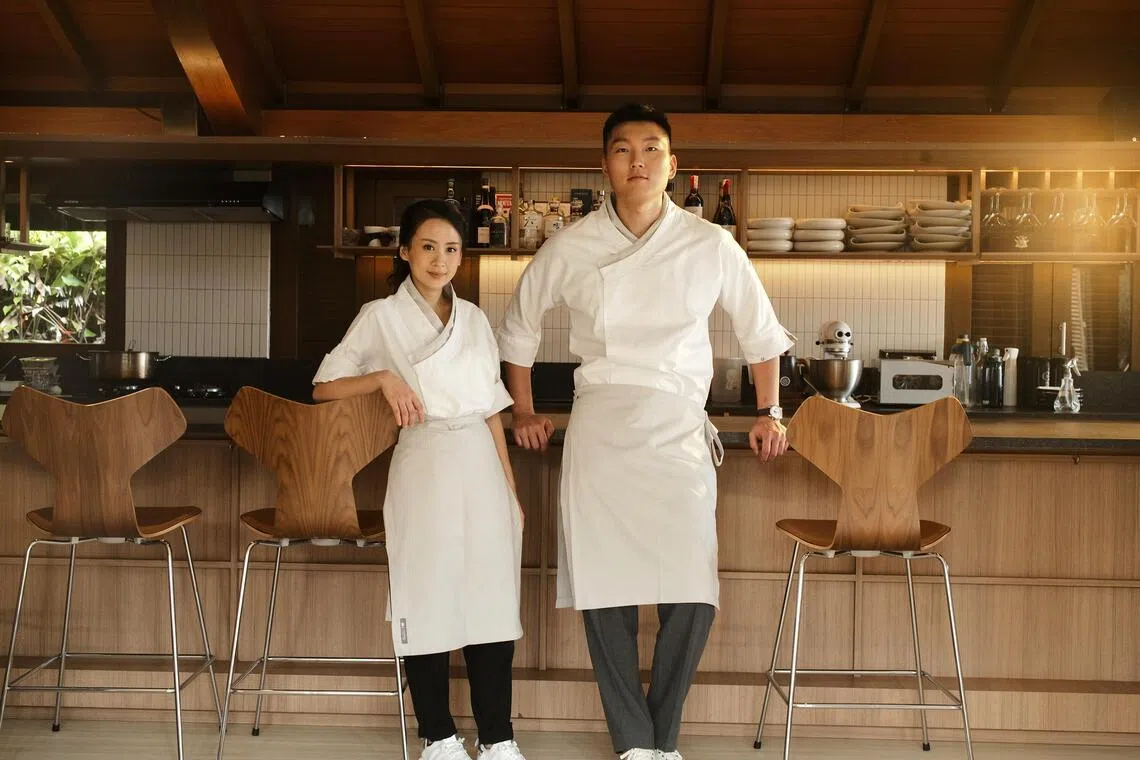
Jung Chan Dining is founded by South Korean chef Jung Chanhyuk, who runs it with his Indonesian wife, Ms Miyagi Stela Monica.
PHOTO: JUNG CHAN DINING
The latter is part of an optional drink pairing (550,000 rupiah or S$43 a person for five drinks) that also includes homemade Korean sake and a ginseng-forward libation that Jung calls “the most Korean cocktail you will ever try”. It reminds me of samgyetang or Korean ginseng chicken soup – assertively herbal but not altogether unpleasant.
Every aspect of the meal is a discovery – culinary, historical – delivered with meticulous attention to detail.
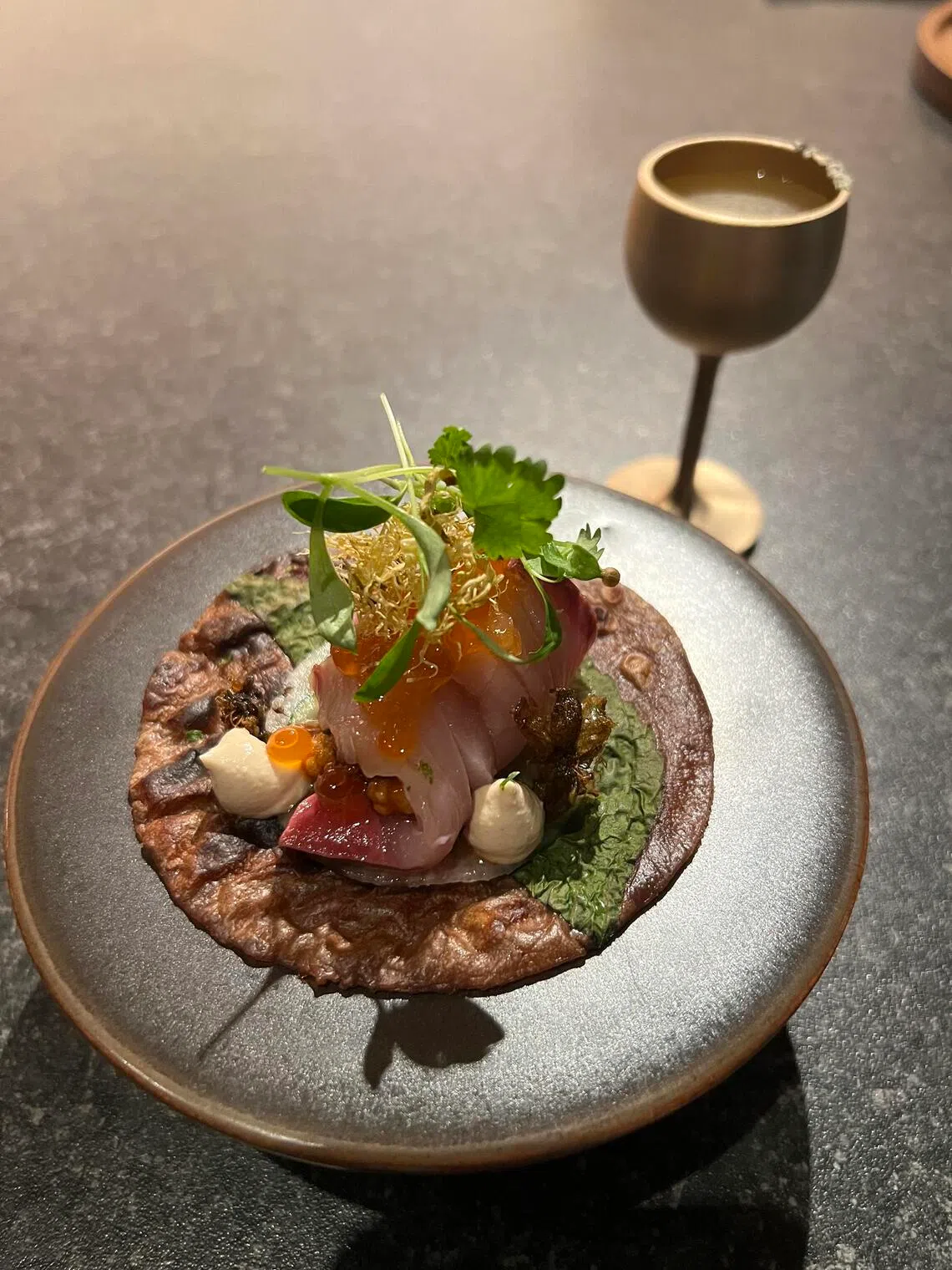
Hwe-ssam, an acorn crepe topped with amberjack sashimi, pickled radish, barley ssamjang and coriander.
ST PHOTO: CLARA LOCK
The menu’s current concept taps Jinsang, an ancient tribute system during the Joseon dynasty (1392 to 1910) where people were required to provide goods such as fresh produce to the king. At the restaurant, diners receive a card (printed in colour on thick card stock and decorated with gold foil) accompanying each course that explains the regional origin and inspiration behind the dish.
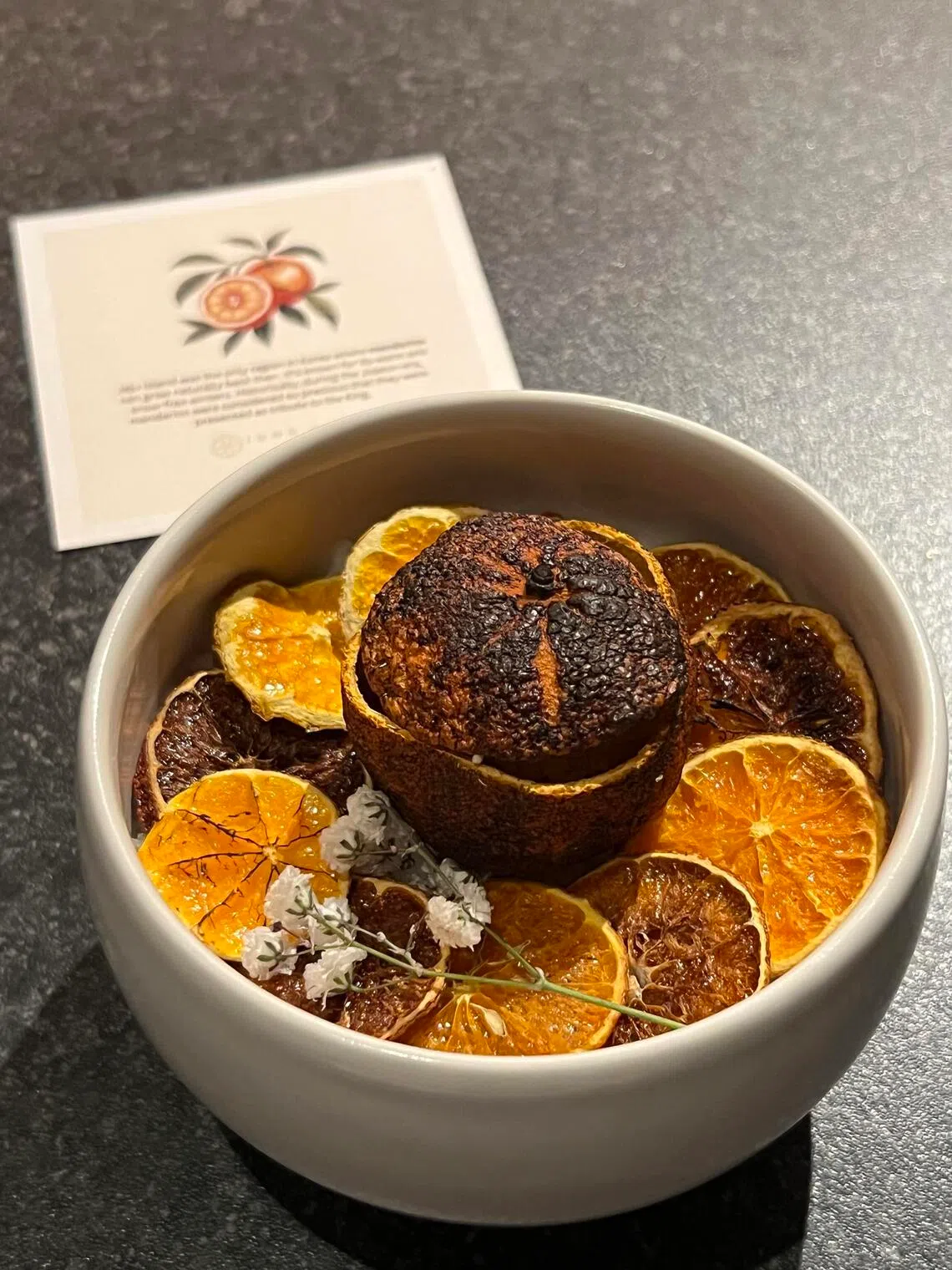
Mandarin granita served with housemade vinegar and fermented grape.
ST PHOTO: CLARA LOCK
And the second course of two exquisite tartlets – one with hanwoo beef and duck liver topped with kimchi and generous shavings of truffle; the other with ama ebi (Japanese sweet shrimp), glazed anchovy and white kombu – is served on an elaborate box resembling a traditional Korean hat called gat that once symbolised social status. A light housed within each specially designed box illuminates the food.
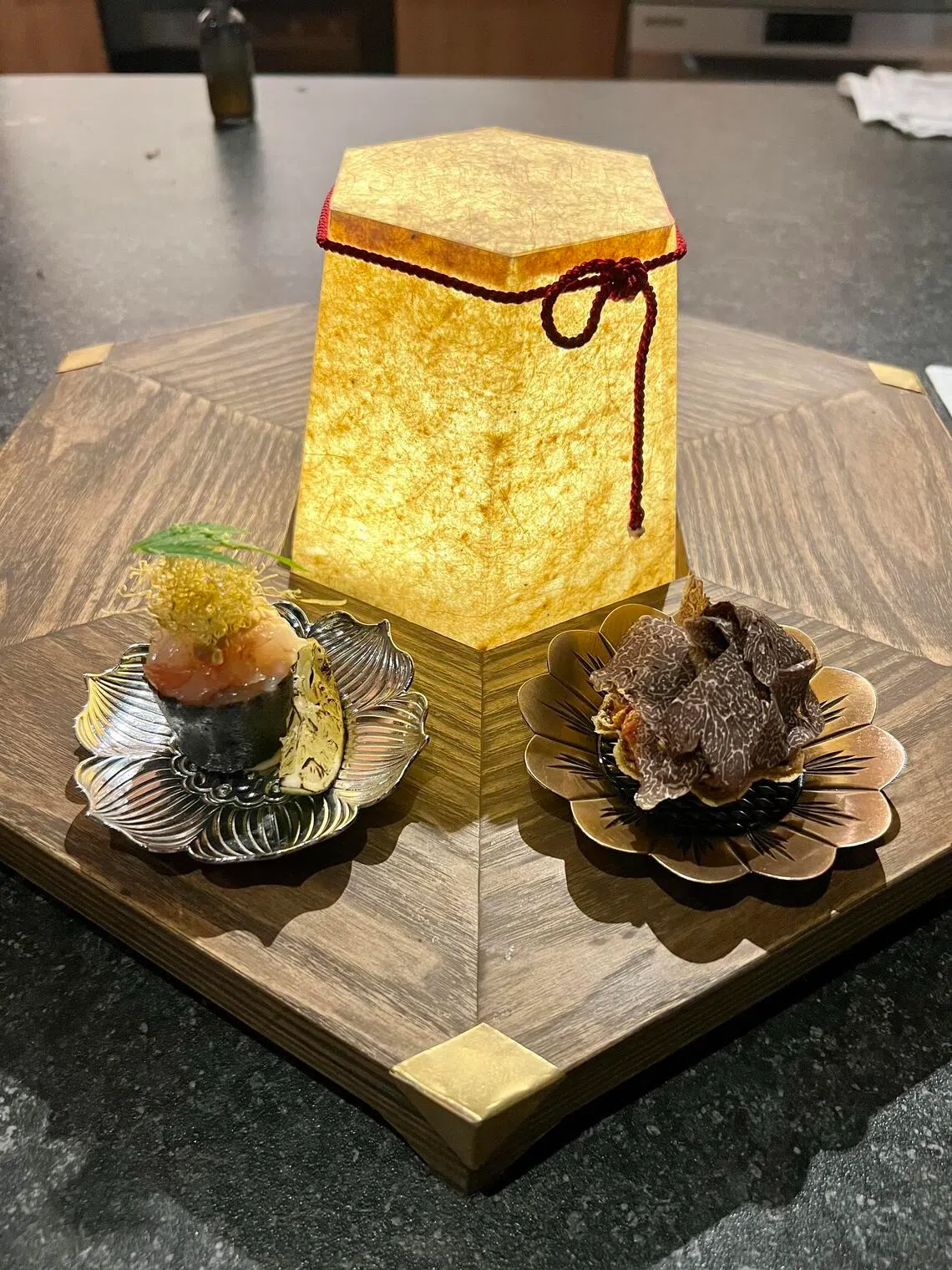
A seafood and beef tartlet served atop a box inspired by the traditional Korean hat, called gat.
ST PHOTO: CLARA LOCK
One gets the sense that Jung enjoys these theatrics, which culminates in dessert, the only dish that has remained on the menu since the restaurant opened in 2022.
His doenjang creme brulee tastes similar to cheesecake, the fermented soya bean paste lending complexity. It is topped with koji ice cream that he churns on the spot using liquid nitrogen – clouds of smoke billow from the KitchenAid mixer in a scene begging to be photographed.
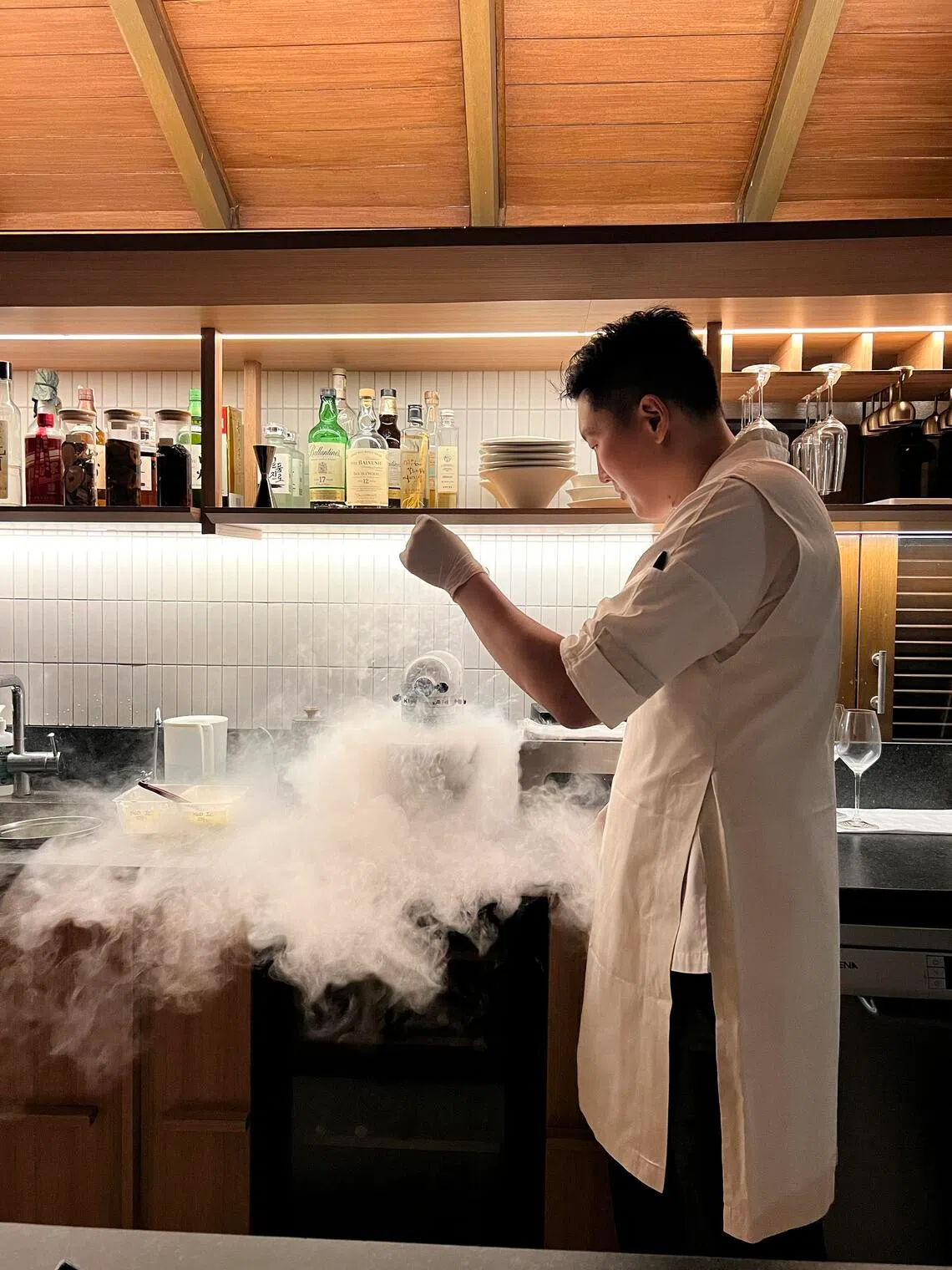
Chef Jung makes koji ice cream to accompany the doenjang creme brulee dessert.
ST PHOTO: CLARA LOCK
For the finishing touch, Jung shatters the brittle petals of a frozen rose, sprinkling it atop the dessert along with a touch of makgeolli salt. It would have been a surprise, but for social media. “We saw this on Instagram,” the couple next to me whisper as we applaud.
Will his performative flair impress Michelin Guide inspectors, from whom Jung hopes to earn a coveted star by moving the restaurant to the Indonesian capital, which he is looking to do in 2026?
He acknowledges the controversy around the awards, including the industry open secret
Yet, it is validation he believes in. “Customers can ignore awards, but not chefs,” he says.
Diners who prize a solid meal over accolades should go now before recognition, if it comes, makes it even harder to book a seat.
A set dinner menu with nine courses costs 1.75 million rupiah a person and is available from Wednesdays to Saturdays. For reservations, go to @jungchan_dining on Instagram.


